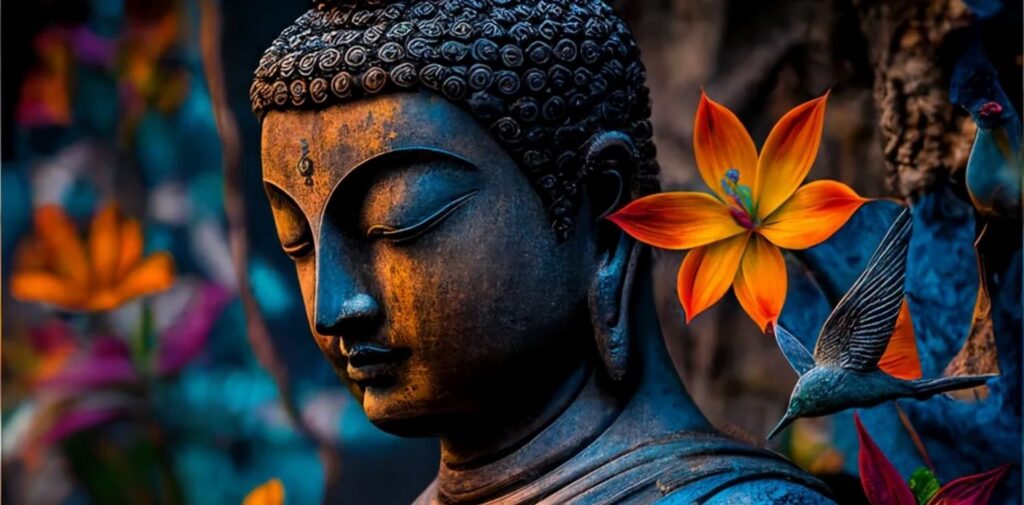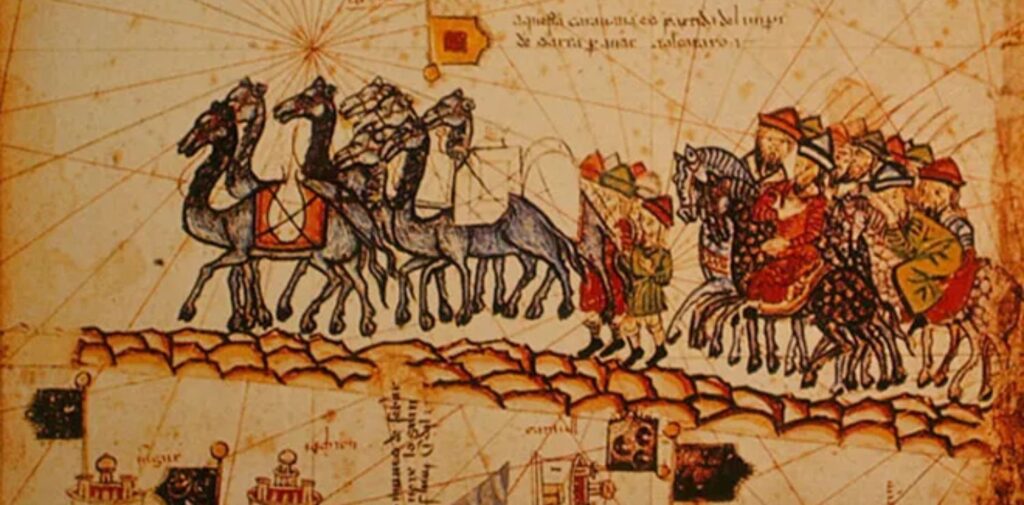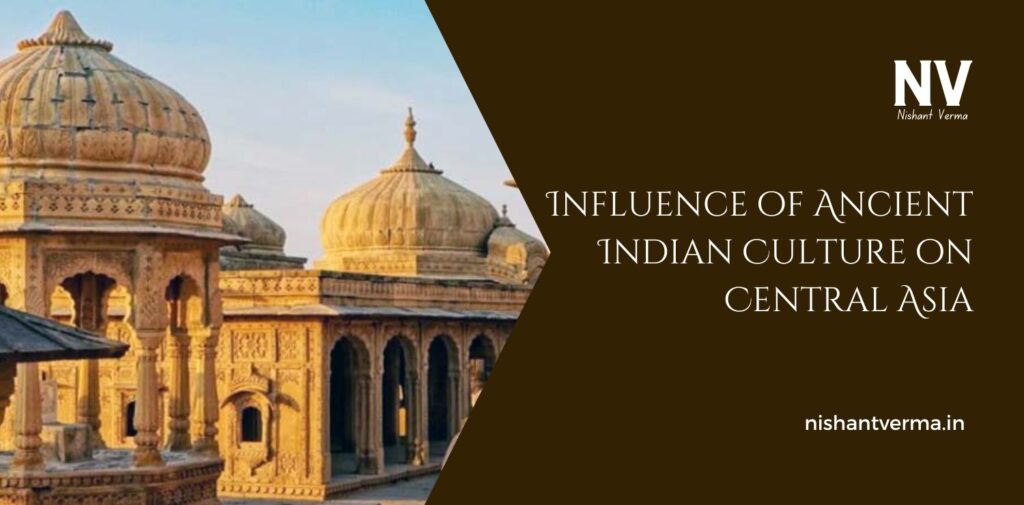India, with its rich history, culture, and traditions, has long been a source of influence for many countries worldwide. One such region where Ancient Indian Culture had a significant impact is Central Asia. Central Asia is a large area that includes countries like Afghanistan, Kazakhstan, Uzbekistan, Turkmenistan, Kyrgyzstan, and Tajikistan. Although geographically distant, India’s cultural, spiritual, and economic influence extended deeply into Central Asia for thousands of years. This influence can be seen in the art, religion, trade, and even the daily lives of the people in Central Asia.
Let’s explore how ancient Indian culture influenced this fascinating region.
The Spread of Indian Religion: Buddhism
One of the most important ways Ancient Indian Culture spread to Central Asia was through religion, especially Buddhism. Around the 3rd century BCE, a prince named Ashoka, the ruler of the Maurya Empire in India, sent missionaries to spread Buddhism to different parts of Asia. His efforts reached far and wide, including Central Asia.
Buddhism became a major religion in the region, especially in countries like Afghanistan and parts of modern-day Pakistan and Uzbekistan. The famous Silk Road, a network of trade routes, helped spread not only goods but also ideas and religions. Buddhist teachings travelled through these routes, reaching the cities of Central Asia, where they were embraced by many.
The great Buddhist monasteries and stupas that were built in places like Bamiyan in Afghanistan show the deep connection between Ancient Indian Culture and Central Asia. The beautiful statues of Buddha carved into cliffs are a testament to the influence of Indian art and religious practices in the region.

Indian Art and Architecture in Central Asia
Indian culture also had a lasting impact on the art and architecture of Central Asia. The intricate designs and decorations of Buddhist monasteries in the region show the influence of Indian styles. Indian artists and architects influenced Central Asian craftsmen, leading to the development of a unique blend of Indian and Central Asian art.
One example of this influence is the Gandhara art style, which flourished in ancient Afghanistan and parts of Pakistan. Gandhara art is a beautiful mix of Indian Buddhist traditions with Greek and Roman artistic styles. This happened because of the interaction between Indian and Greek cultures, especially after Alexander the Great’s invasion of the Indian subcontinent.
The famous sculptures of Buddha from this period, with their graceful poses and detailed drapery, show how Indian artists’ techniques were adopted and adapted by Central Asian craftsmen. The use of Indian motifs, like lotus flowers, and the influence of Indian architecture can still be seen in Central Asian monuments today.
Indian Influence on Central Asian Languages
Another area where ancient Indian culture influenced Central Asia was in language. The spread of Buddhism led to the use of the Sanskrit language in many Buddhist texts and teachings. Sanskrit, which was the language of ancient India, was used in many Buddhist scriptures, including the ones brought to Central Asia by missionaries.
In addition to Sanskrit, several Indian words and phrases made their way into Central Asian languages. Many languages in Central Asia, like Tajik, Uzbek, and others, have words that were borrowed from Sanskrit and other Indian languages. For example, the word “prajna” (meaning wisdom in Sanskrit) is used in several Central Asian languages, showing the impact of Indian thought and culture.
Trade Between India and Central Asia
Trade played an essential role in connecting India and Central Asia. The famous Silk Road, which was a network of trade routes, not only connected China with Europe but also connected India with Central Asia. Indian merchants travelled these routes to sell goods like spices, silk, and precious stones. In return, they brought back products like horses, textiles, and gold from Central Asia.
Through trade, goods were exchanged, but so were ideas and culture. Indian merchants brought with them not just physical goods but also Indian art, religious beliefs, and even new technologies. The presence of Indian goods in Central Asian markets shows the deep and long-standing relationship between the two regions.

The Influence of Indian Science and Mathematics
Indian scholars were known for their remarkable contributions to science and mathematics. Concepts like zero, the decimal system, and advanced methods of astronomy were developed in India and travelled to Central Asia. Indian scholars’ understanding of mathematics and science was highly respected, and their ideas reached many regions, including Central Asia.
For example, the famous Indian mathematician Aryabhata’s ideas about astronomy and mathematics were known in Central Asia. Indian books and manuscripts on science and medicine were translated into languages spoken in Central Asia and influenced scholars in these regions. The contributions of Indian scientists helped Central Asia make advances in astronomy, mathematics, and medicine.
Cultural Exchange Through Music and Dance
Cultural exchange between India and Central Asia also took place through music and dance. Indian music, with its rhythmic patterns and melodic tunes, was introduced to Central Asia by travellers and traders. Instruments like the sitar and tabla found their way into Central Asia, influencing local music traditions.
Similarly, dance forms from India, particularly those tied to religious rituals and celebrations, made their way into Central Asian culture. The traditional dance forms of Central Asia bear some resemblance to Indian dance forms, especially in their use of hand gestures and body movements. This exchange helped create a shared cultural heritage that both regions are proud of today.
Indian Influence on Central Asian Cuisine
Did you know that Indian cuisine has also influenced Central Asian food? Many spices that are commonly used in Central Asian cooking, like saffron, cumin, and coriander, come from India. These spices were brought along trade routes by Indian merchants, and over time, they became an important part of Central Asian cooking.
Indian cooking techniques, like the use of rich gravies and aromatic spices, can also be found in Central Asian dishes. Dishes like pilaf and kebabs, which are popular in Central Asia, have some roots in Indian culinary traditions. This shows how deeply ancient Indian culture has permeated the everyday lives of people in Central Asia, even in the food they eat.

The Lasting Legacy of Indian Influence in Central Asia
The influence of ancient Indian culture on Central Asia is still visible today. From religion to art, language to trade, India’s rich cultural heritage has left an indelible mark on this region. The spread of Buddhism, the exchange of goods and ideas along the Silk Road, and the fusion of ancient Indian culture and Central Asian art and architecture have all contributed to the vibrant and diverse cultures of Central Asia.
As we look at the history of this cultural exchange, we can see how India and Central Asia were once closely connected. Even though thousands of years have passed, the impact of this cultural relationship can still be felt today in the traditions, language, art, and food of Central Asia.
Conclusion – Ancient Indian Culture
In conclusion, the influence of ancient Indian culture on Central Asia is a fascinating story of exchange, growth, and understanding between two ancient civilizations. India’s religion, art, language, science, and trade helped shape the history and culture of Central Asia in ways that continue to be felt today. The connections formed between the people of these two regions through time have left behind a legacy that celebrates the beauty of cultural exchange and the power of shared knowledge.
Understanding this influence not only helps us appreciate the past but also reminds us of the importance of connecting with different cultures to create a more harmonious and interconnected world.




